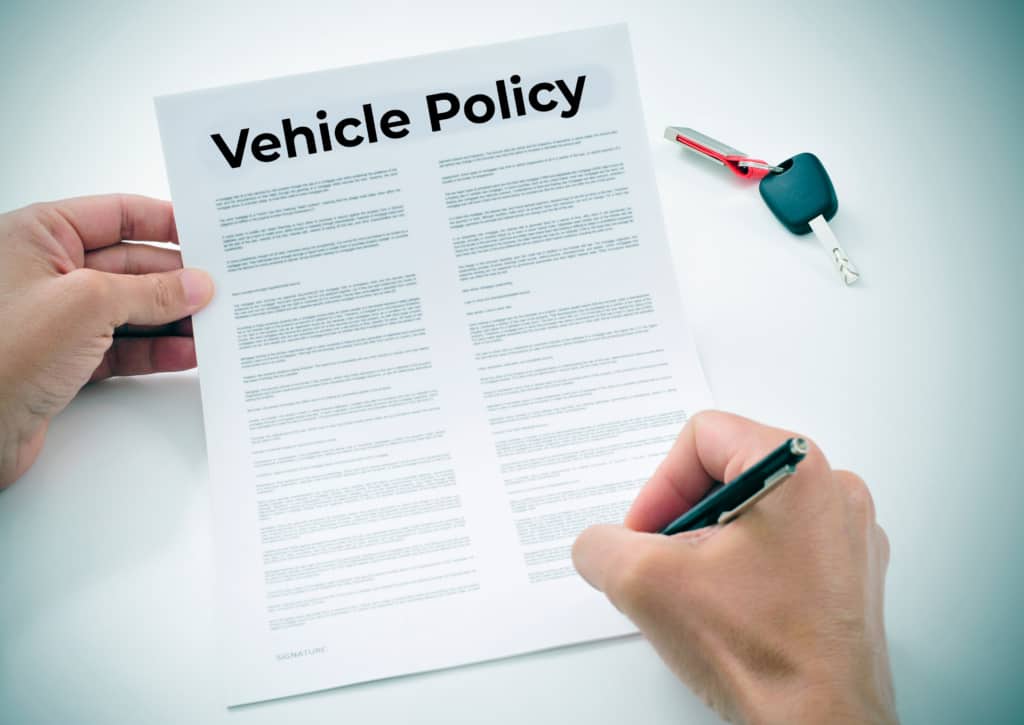As road safety standards continually evolve, your vehicle policy should mirror these advancements. An up-to-date vehicle policy is a powerful tool for risk management. It allows your organization to identify and address potential hazards, reducing the likelihood of accidents or non-compliance issues.
Let’s examine key components that can strengthen and enforce your company’s vehicle policy.

Basic elements of a company vehicle policy
Define driving eligibility
Your vehicle policy should clearly outline the eligibility criteria for individuals authorized to drive on behalf of the organization. While specific requirements may vary based on your company’s unique needs and industry standards, consider the following elements to help define those who are permitted to operate company vehicles.
- Individuals must possess a valid and current driver’s license relevant to the type of vehicle they will operate.
- Candidates with a clean driving record, free of major violations and accidents.
- Employees may need specific endorsements such as commercial driving licenses (CDL) based on the nature of the job.
- Drivers may need to meet certain medical standards to ensure they are physically fit to operate vehicles safely.
- Training programs or certifications for specialized vehicles or hazardous materials transportation may be required.
Keep in mind that a driver’s qualifications can change over time, even if they were initially qualified at the time of hiring. It is expected that 5-7% of employees will receive negative MVR changes within a year, this could be new speeding tickets, DUIs, and even license suspensions. Without a well-defined safety process, it becomes easy for violations to go unnoticed. Be sure to pull MVRs periodically or use MVR Monitoring technology to ensure your employees continue to meet the standards to drive for your organization.
Define Driving Rules
Consistently emphasize safe driving habits, highlighting the importance of adhering to rules outlined in your company vehicle policy rules. Specify guidelines for seat belt usage, cellphone policies, avoiding distracted driving, following traffic signs, and conducting regular vehicle maintenance checks.
While there are many causes of driver distraction, cell phones remain a major obstacle to focused driving. The National Traffic Safety Administration reports that phone use is involved in 12% of all car accidents on U.S. roadways
Enforcing driving rules within your organization goes beyond merely establishing policies; it involves a proactive approach that includes ongoing training and regular discussions on safety. Implementing a robust training program is essential for instilling a strong safety culture among your drivers.
Personal Owned Vehicles
For employees using personal or rented vehicles for business, ensure the vehicle policy defines safety requirements. Clearly outline when such use is allowed and stress the importance of adhering to safety standards.
Additionally, be sure to touch on topics like insurance coverage, driving record checks, reimbursement, etc.
Accident Procedures
Even with a well-established and solid fleet management program in place, accidents can still occur.
Define a step-by-step protocol, outlining the immediate actions an employee should take post-accident, including contacting a designated point of contact within the organization. Establish who covers damages, fines, and other legal guidelines.
Use of Safety Technology
Include the use of safety technology like GPS, telematics, and MVR monitoring in the company vehicle policy. Clearly outline how these tools are utilized to enhance safety measures and ensure compliance with established guidelines.
For example, MVR Monitoring will actively track and assess the driving records of employees who operate company vehicles. This continuous monitoring ensures that the organization remains informed about any recent traffic violations, DUI convictions, or license suspensions among its drivers. By promptly identifying and addressing negative changes in driving records, the company can proactively mitigate potential safety risks, initiate targeted interventions such as additional training or counseling, and take necessary disciplinary actions as needed.
Reviewing and updating your vehicle policy
Establish a schedule for regular reviews of your vehicle safety policy to ensure it remains current and relevant. Update the policy as needed to reflect changes in laws, regulations, or organizational requirements.
By including these basic elements in a vehicle safety policy, organizations can create a framework that promotes a culture of safety, reduces the risk of accidents, and ensures compliance.
Need help with your employee’s driving records or MVR Monitoring implementation? Contact us






